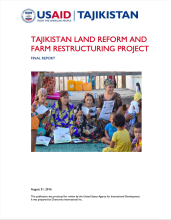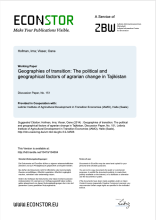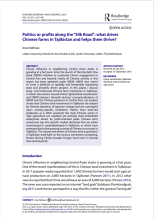/ library resources
Showing items 37 through 45 of 3661.Farmland ownership fragmentation is one of the important drivers of land-use changes. It is a process that in its extreme form can essentially limit land management sustainability.
This article presents a comparison for the impact from lack of land governance in Brazil between livestock and agricultural production. It begins with a brief description of the land regulatory system and its development in Mato Grosso do Sul State and Brazil.
ABSTRACTED FROM EXECUTIVE SUMMARY: Throughout Tajikistan, land, and access to it, is paramount to continued resilience and improved livelihoods of rural citizens.
After more than two decades of agrarian change in Tajikistan, farming structures seem to crystallise.
China’s influence in neighboring Central Asian states is growing at a fast pace. Since the launch of the One Belt, One Road (OBOR) initiative to accelerate China’s engagement in Central Asia and beyond, nearly all Chinese activity in this region has been gathered under OBOR.
We assess the spatial and intertemporal change patterns of farmland prices using per hectare minimum willingness to accept (WTA) sales and rental prices in Malawi.
This is the first results-based country strategic opportunities programme (RB-COSOP) for the country, and covers the period 2017-2021.
Cotton production substantially contributes to the GDP of Uzbekistan. It is produced under a state procurement policy, according to which farmers have to allocate half of their land for cotton, fulfill cotton output levels and sell the entire harvest of cotton to the state.
Нумерация страниц
Land Library Search
Through our robust search engine, you can search for any item of the over 73,000 highly curated resources in the Land Library.
If you would like to find an overview of what is possible, feel free to peruse the Search Guide.








